
9 dryness-loving shrubs and trees: nursery pros share their favorites
These trees and shrubs won’t mind if spring brings only a little rain and summer stretches into a long heatwave. Nurseries introduce their favorites that flourish in dry areas, along with perfect companion plants.
Marjaana Lepänjuuri: “Smooth serviceberry is truly stunning when it blooms in spring”
Pinsiön Taimisto nursery, Hämeenkyrö, zone III/IV (Finnish zone, roughly USDA zones 4–5)

1. Pirkkalankoivu (Pirkkala birch)
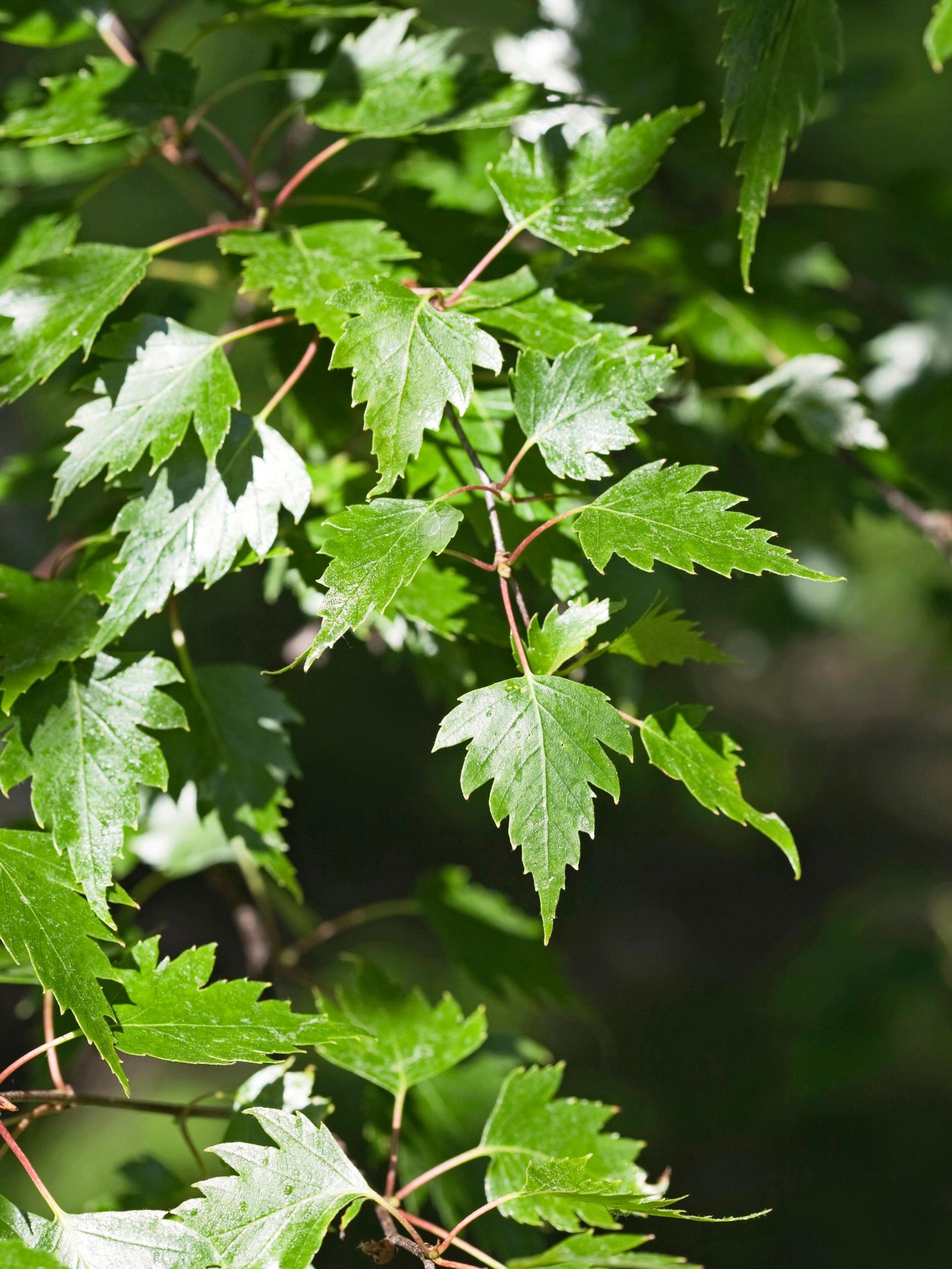
As the name implies, the Pirkkala birch was discovered in Pirkkala, Finland, in the 19th century. It is rare to see one in the wild, but it grows in the Häme region of Finland. This large deciduous tree creates a striking presence in the yard. Its deeply lobed leaves make it immediately clear that it isn’t an ordinary silver birch.
Betula pendula f. bircalensis thrives in large yards. I’d plant the Pirkkala birch by itself or in a small grouping of birches, or line a driveway with it. Birches can be quite thirsty, so avoid planting a vegetable patch right next to them. They’re not picky about soil, provided it’s not too wet, and a sunny spot is ideal. Birches dislike pruning, so only prune them a little if needed—preferably in August.
Light requirement: full sun to partial shade
Height: 20 m (66 ft)
Blooming time: May
Hardiness zone: I–V (Finnish zone, roughly USDA zones 3–5) (check the Finnish hardiness zones here)
2. Mountain ash
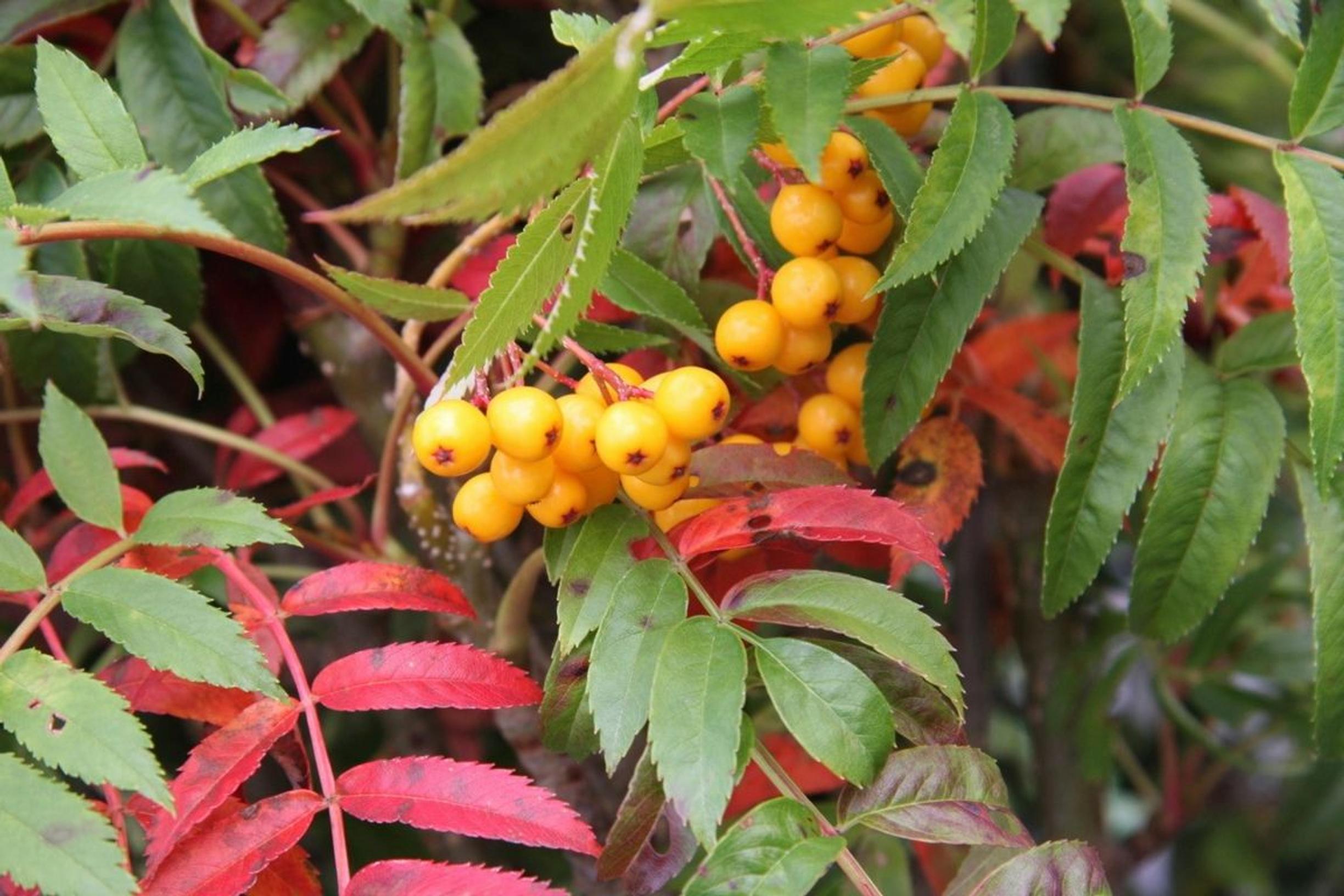
The yellow-berried columnar rowan ‘Autumn Spire’ grows in a compact, upright form and reaches about 1.5 m (5 ft) wide. If suckers appear at the base or trunk, remove them while they’re small. Its leaves turn red in the fall, which looks stunning next to the yellow berries. Once established, rowans handle dryness well.
With its narrow canopy and compact habit, this subspecies of European rowan is made for small yards or tight spaces. I’d use it as a focal point in a shrub cluster. Japanese spirea and dwarf mountain pines, which bloom at different times, make excellent companions. Sorbus aucuparia ‘Autumn Spire’ isn’t fussy about soil but does best in sandy loam.
Light requirement: full sun to partial shade
Height: 4–5 m (13–16 ft)
Blooming time: June–July
Hardiness zone: I–VI (Finnish zone, roughly USDA zones 3–6) (check the Finnish hardiness zones here)
3. Smooth serviceberry
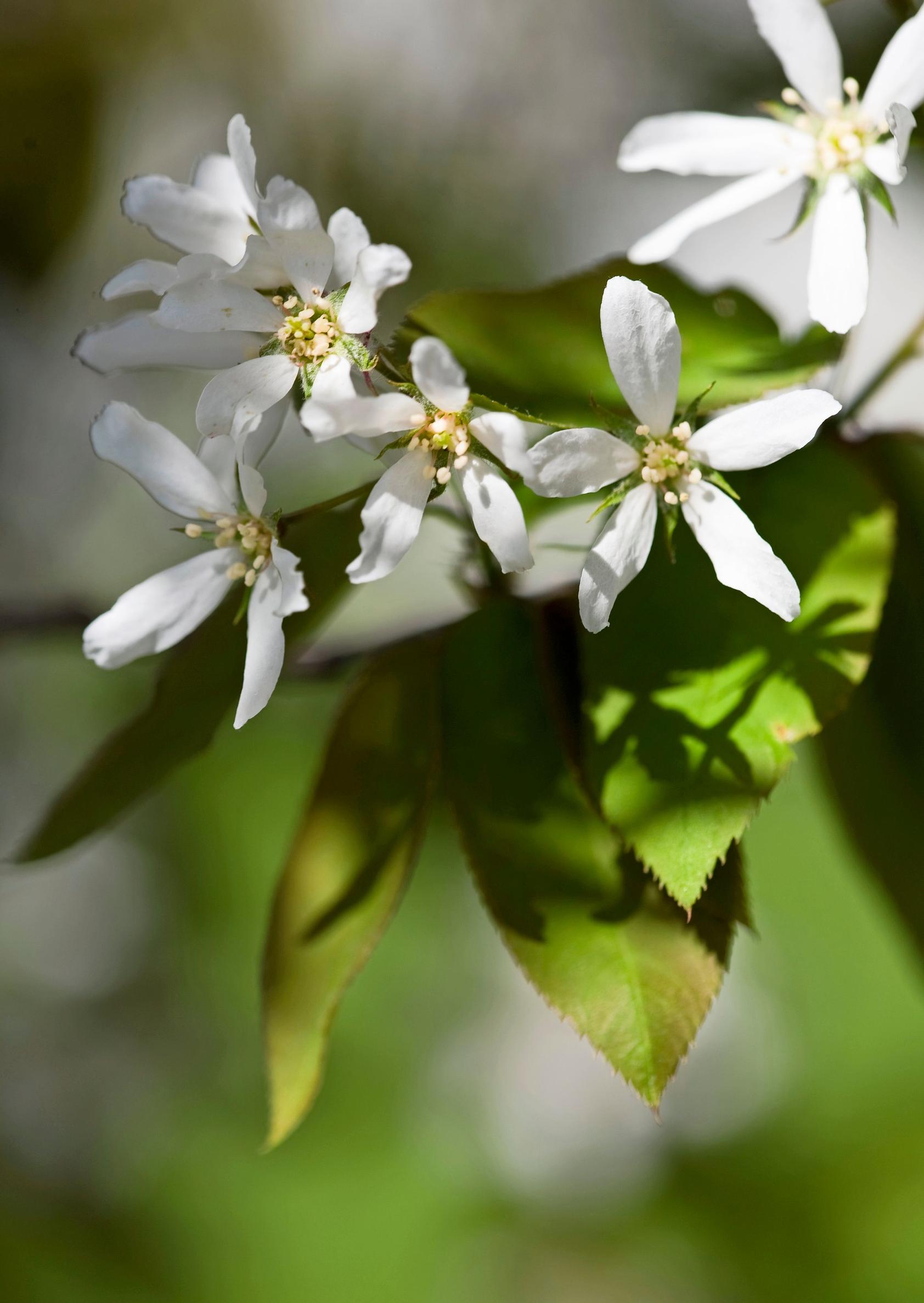
The smooth serviceberry is sold either as a shrub or a small tree with a trunk. Its slender, decorative branches twist more with age. Amelanchier laevis is breathtaking in spring when it blooms, as the reddish-brown leaves unfurl at the same time as the flowers. By fall, the foliage glows bright red-orange. Once well-rooted, it’s impressively drought-tolerant. This easy-care serviceberry needs little pruning, although it tolerates trimming just fine.
The tree form suits even small yards, while the shrub form can create a free-form or pruned hedge. If you buy a shrub, pick a well-branched specimen so it grows lushly. Height isn’t really an issue. Shrubby cinquefoil and spireas make great companions around or under it.
Light requirement: full sun to partial shade
Height: 3–4 m (10–13 ft)
Blooming time: May–June
Hardiness zone: I–III (Finnish zone, roughly USDA zones 3–4) (check the Finnsih hardiness zones here)
Ilpo Koivu: “Hardy potentillas are some of the best drought-tolerant deciduous shrubs”
Puutarha Tahvoset nursery, Raasepori, zone Ib (Finnish zone, roughly USDA zone 5)

1. Shrubby cinquefoil ‘Pink Paradise’
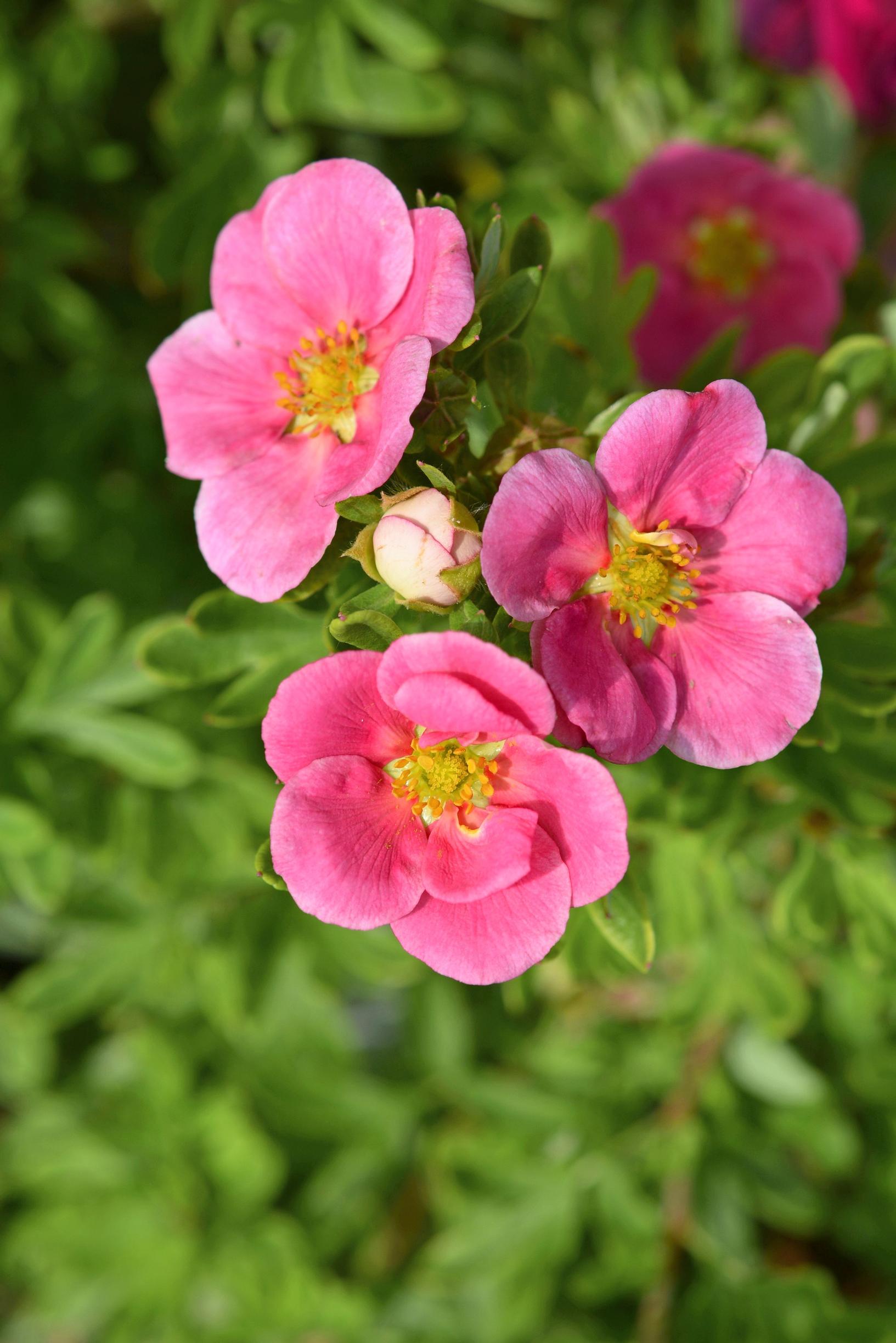
Dasiphora fruticosa ‘Pink Paradise’ adapts to a sunny location and produces many large blooms, with petals layered in a couple of rows.
Resilient potentillas rank among the best drought-resistant deciduous shrubs. When summers are warm, ‘Pink Paradise’ blooms are pale—almost white—but as temperatures cool, they turn a vibrant pink, deeper through fall. Undemanding and easy to care for, these shrubs don’t need regular pruning; just remove old stems to rejuvenate them.
Potentillas perform beautifully in large shrub groupings, as hedges, or for covering slopes. I’d combine them with savin junipers or dwarf mountain pines that also thrive in dry conditions. I even have this variety doing well on a north-facing slope.
Light requirement: full sun to partial shade
Height: 70–80 cm (28–31 in)
Blooming time: July–August
Hardiness zone: I–III (IV) (Finnish zone, roughly USDA zones 3–5) (check the Finnish
2. Swedish juniper
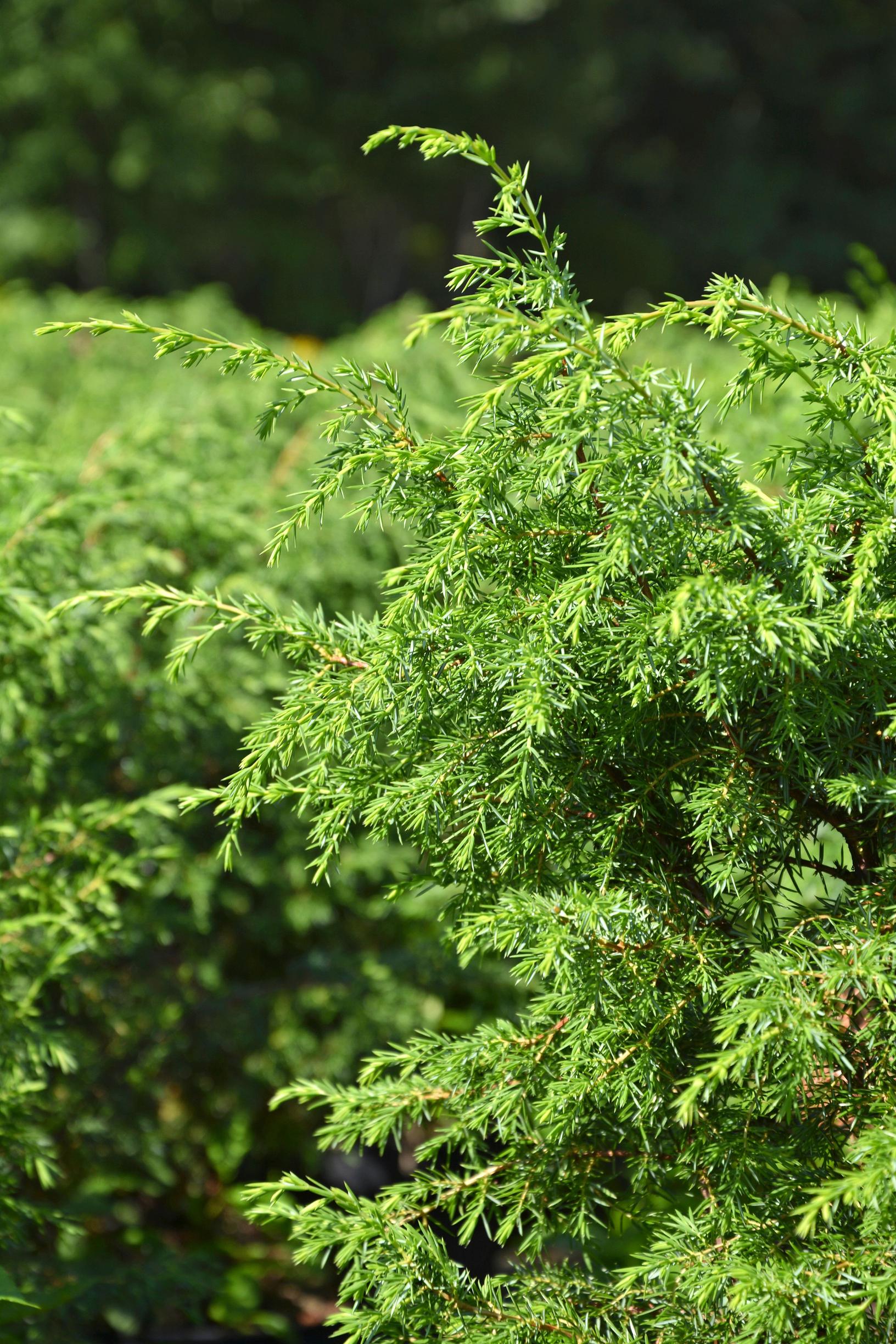
The distinctive columnar juniper ‘Suecica,’ with slightly drooping branch tips, thrives in full sun. This slow-growing conifer comes in a range of sizes.
Upright and bold, Juniperus communis adds height and character to any planting. It’s low-maintenance—just make sure it’s not overshadowed by nearby shrubs, which can cause browning on its sides.
Plant several junipers in a small group, or choose a single specimen if you have a limited space. Keep it away from walls or eaves to prevent falling snow from damaging its compact shape. I’d pair it with hydrangeas, Spiraea betulifolia or Spiraea splendens, other junipers, or mountain pines.
Light requirement: sunny
Height: 3–5 m (10–16 ft)
Hardiness zone: I–V (VI) (Finnish zone, roughly USDA zones 3–6) (check the Finnish hardiness zones here)
3. Sorbus x arnoldiana
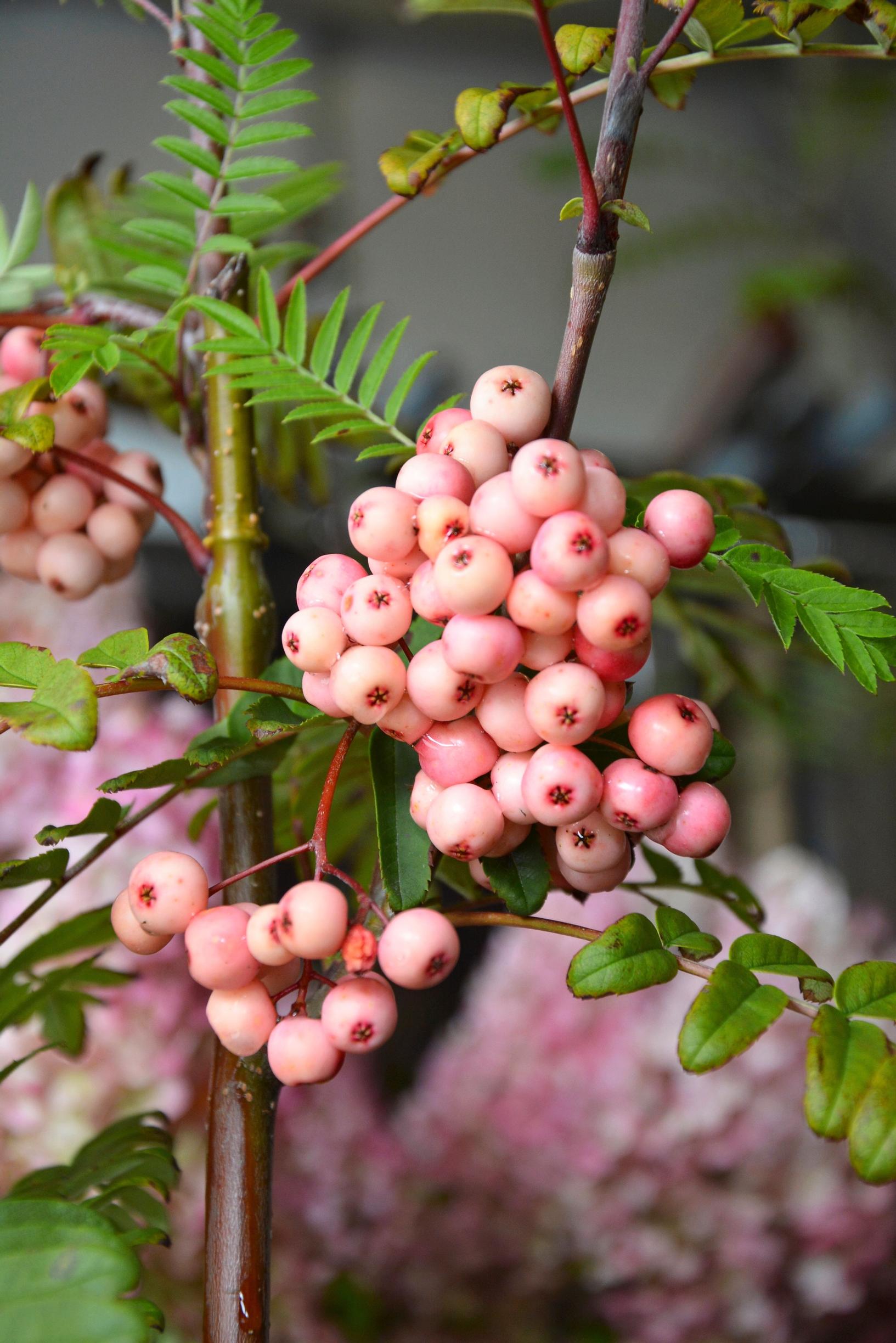
The ‘Kirsten Pink’ rowan stands out with pale pink berries. Like other rowans, it isn’t demanding about its location or soil. Under good conditions, it might do well beyond zone IV, though there’s limited data on that. In summer, it’s covered with white blooms, and by fall, the leaves turn orange-red. I’d plant this decorative little tree by itself or in a grouping of a few. Keep in mind it can grow 4–6 m (13–20 ft) wide, so plan accordingly.
Sorbus x arnoldiana thrives in both dry and more moist soils, but excellent drainage is key. I’d place it near hydrangeas that flower later, extending the bloom season overall.
Light requirement: full sun to partial shade
Height: 5–10 m (16–33 ft)
Blooming time: June–July
Hardiness zone: I–IV (Finnish zone, roughly USDA zones 3–5) (check the Finnish hardiness zones here)
Terttu Tuovila: “Sea buckthorn combines ornament and utility”
Puutteenkylän puutarha nursery, Kuusamo, zone VII (Finnish zone, roughly USDA zone 2)

1. Sea buckthorn
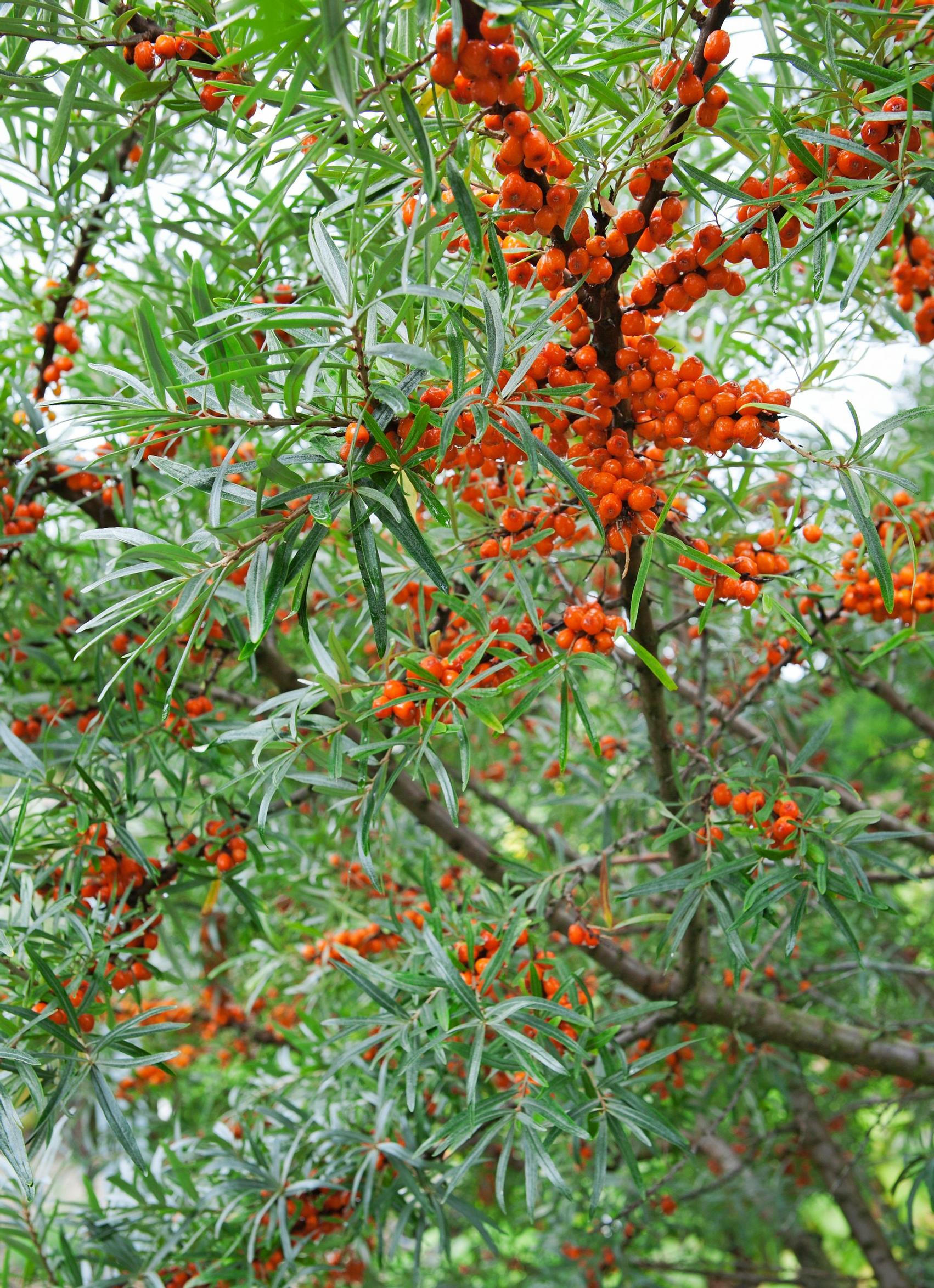
In the wild, sea buckthorn flourishes on seashores and even farther north in dry, sandy, or rocky soil. As a nitrogen fixer, it needs minimal fertilization. With its silvery leaves and bright orange berries, it offers both decorative value and practical benefits. Sea buckthorn can be grown as a shrub or a tree—if you’re not interested in a big harvest, you can prune it to a small tree shape.
Hippophae rhamnoides prefers full sun and can’t compete with other plants, so give it ample room. Windy sites are helpful, as sea buckthorn is wind-pollinated. For berries, plant both male and female specimens. Up here in the north, I sometimes use two male varieties, like ‘Rudolf’ and ‘Tarmo,’ which are effective pollinators for a female plant.
Light requirement: sunny
Height: 2–5 m (7–16 ft) depending on the variety
Blooming time: May
Hardiness zone: I–VI (VII) (Finnish zone, roughly USDA zone 2–3) (check the Finnish hardiness zones here)
2. Scotch rose
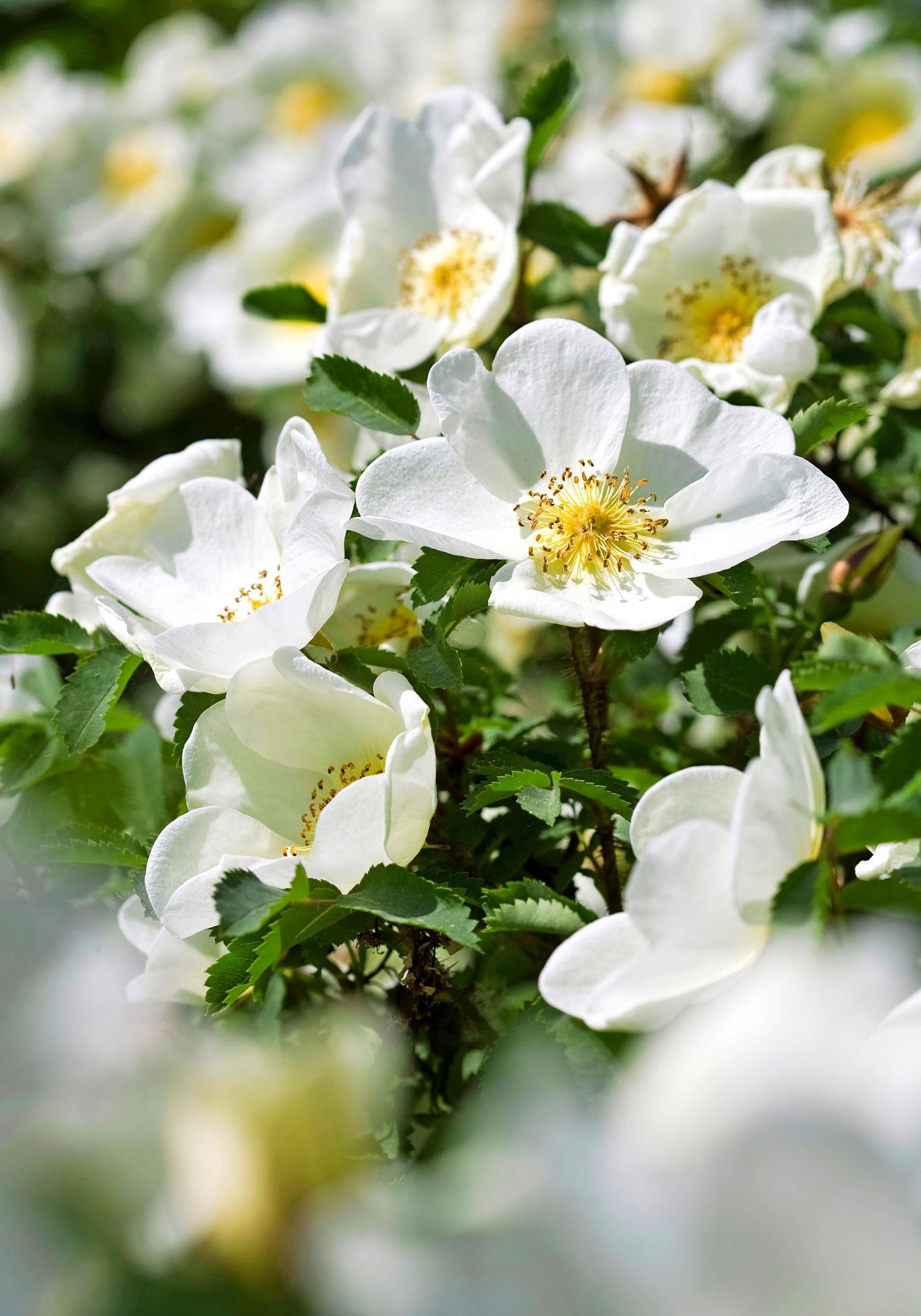
This species of rose is a healthy, easy, and reliable classic. We often joke at the nursery about its name, because in Kuusamo it frequently blooms in July, contrary to its Finnish name "Midsummer rose". Its abundantly flowering, nostalgic blooms have one of the best fragrances I know, and a stretch of dry, sunny weather really boosts the blooms. Rosa pimpinellifolia ‘Plena’ flourishes in dry conditions as well as in richer, moist soil. For best flowering, keep up regular pruning by removing the oldest canes each year.
I’d plant five to seven shrubs together in their own bed and border the area, since the midsummer rose spreads by root suckers. You could also mix it with other vigorous roses, such as the Rosa x malyi or Rosa 'Ruskela'.
Light requirement: full sun to partial shade
Height: 100–200 cm (39–79 in)
Blooming time: June–July
Hardiness zone: I–VII (Finnish zone, roughly USDA zones 2–5) (check the Finnish hardiness zones here)
3. Grey alder 'Laciniata'
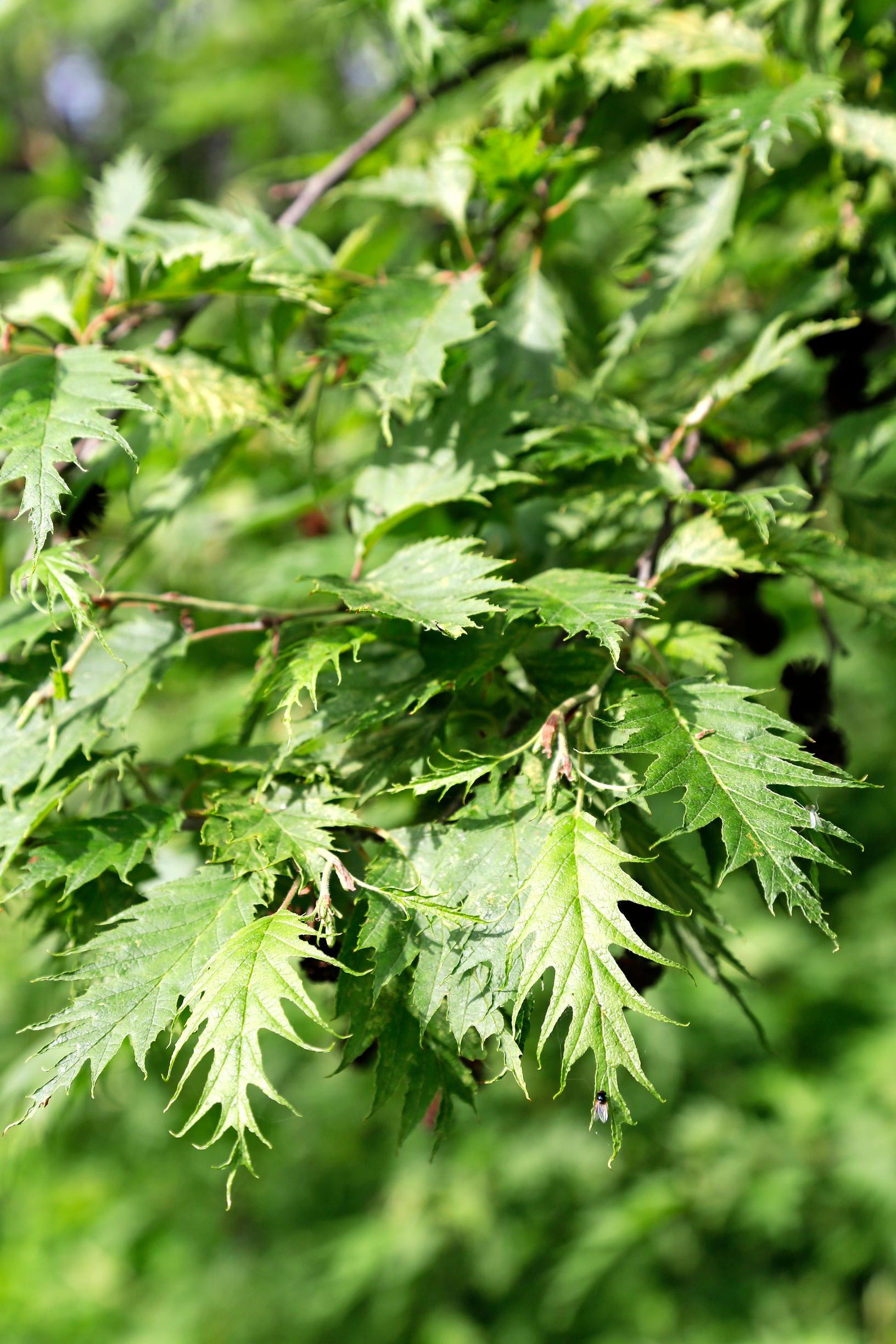
The grey alder 'Laciniata' grows more slowly than the grey alder, producing sturdy root and basal shoots that should be removed early to preserve a clean tree form. Alnus incata f. laciniata is decorative year-round. In winter, it’s dotted with small cone-like female catkins. By April, you’ll see dangling male catkins. In summer, its deeply lobed leaves add interest.
This tree works in both natural and more structured landscapes. Its lower branches can extend around 3 m (10 ft), creating a pear-like profile that’s broader at the base. Think carefully about placement. In my sandy soil, it’s grown to about 7 m (23 ft) in 25 years. I’d plant billiard spirea, spirea media, or elm-leaved spirea underneath.
Light requirement: full sun to partial shade
Height: 5–10 m (16–33 ft)
Blooming time: April
Hardiness zone: I–VII (Finnish zone, roughly USDA zones 2–5) (check the Finnish hardiness zones here)


